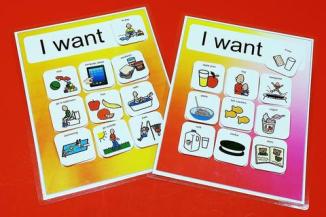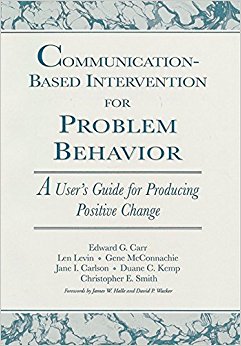Blog #185~Down Syndrome: Supporting Positive Behavior
This month’s blog posts have focused on behavior management, specifically to individuals who have Down syndrome and autism. I recently read, Supporting Positive Behavior in Children and Teens with Down Syndrome. This book by pediatric psychologist, David S. Stein gives a comprehensive breakdown of how to deal with challenging behaviors, with a specific look at how the brain of a person with Down syndrome works.

This book is a must read for anyone who cares for, or works with, a child or teen with Down syndrome. I only wish that this book had been available when 23-year-old son, Nick, was younger. One of the key messages from this book, is how to look at behavior. If you view a bad behavior as willful or intentional, the immediate reaction is to punish. However, it is important to consider that the behavior is communicating some need. The first section of this book, dives into the brain of a child with Down syndrome and cover behavior basics “101”.
In chapter 5, there is a step by step guide to behavior management system designed for children with Down syndrome:
Step 1: Maintain the relationship (keep it positive)
Step 2: Structure the environment for success
Step 3: Use visuals, visuals, visuals
Step 4: Notice good behaviors and set up token economies
Step 5: Use proactive strategies to prevent negative behaviors and support positive behaviors
Step 6: Manage the difficult situation before they happen
The underlying theme in this book is how you approach behaviors. Acknowledge that the behavior is NOT a willful or intentional act designed to make you upset. Instead, view the behavior as an expression of some unmet need or challenge that has not been addressed.
“You can respond to a behavior thoughtfully, rather than emotionally. You can learn to respond…but don’t react.”
Throughout the book, this is the common thread. Respond… but don’t react. Take your emotions out of the equation, and sometimes your gut reaction as well. There are several chapters that address positive behavior management at home, school, community and with siblings.
When disciplining or responding to behavior, here’s what you should and should not do:
You should:
*Take away eye contact.
*Keep your facial expressions neutral.
*Speak very little, if at all.
*Keep your tone of voice neutral.
*Keep your emotions in control.
*If removing attention and emotions is not enough, then direct the child to “take a break”.
And you should not:
*Look right at the child
*Make angry or upset faces.
*Try to explain, using words, why or what they did was horrible.
*Speak in a harsh, animated way.
*Show strong emotions.
Whenever possible, look for ways to prevent the behavior in the first place. Try to determine what is causing the behavior, and what this functions serves the child.
There are often times which may be more difficult and cause more behavior problems. These often occur in transition times, and especially during puberty. These are addressed specifically in this book, along with when and how to seek help from a certified behavior specialist.
This book, Supporting Positive Behavior in Children and Teens with Down syndrome, is a concise guide to understanding behavior and how to manage it thoughtfully, by responding and not reacting to meet a child’s needs. David S. Stein, packed a lot of punch into 132 pages. I highly recommend adding this book to the cart. That’s what is in my noggin this week.
~Teresa 🙂
Follow Nick:










